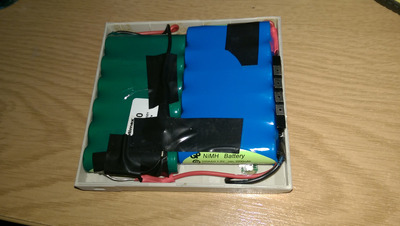First post, by adalbert
I've been using AA ni-mh batteries for refurbishing old laptop battery packs. Most of them originally use 4/3A size but it is easier to fit a bit smaller batteries. The problem is that i'm not using these laptops a lot and putting new cells is a waste of resources and money. So i've been wondering if I could install plastic battery holders inside the battery case and just open the lid and insert the batteries when they are needed. I would wire the thermal fuse in series with battery holders just like with original batery packs.
The only problem is that AA battery holder probably would be too big (I attach the photo of AA cells, they wouldn't fit with a holder), so I'm thinking about using AAA batteries (eneloop or eneloop pro). Do you think that they would be sufficient for such use case? I didn't see max current rating in datasheets, but i saw discharge curves up to 2.4A, which is a lot.
Typical battery pack has 12 cells (14.4V), with 1.6A discharge rate I would get ~10Wh capacity. That would give around 30 minuts run time on average laptop, which is fine, because I just want to use the batteries as backup power source, especially when I want to plug working laptop to another outlet without shutting it down.
So i have two main concerns: is it safe and won't overstress the batteries, and will the charging process be safe - I expect the charging currents to be up to 1.5A, there is no cell balancing in old laptops and I wonder if small AAA case would be able to dissipate enough heat while it is charged.
Repair/electronic stuff videos: https://www.youtube.com/c/adalbertfix
ISA Wi-fi + USB in T3200SXC: https://www.youtube.com/watch?v=WX30t3lYezs
GUI programming for Windows 3.11 (the easy way): https://www.youtube.com/watch?v=d6L272OApVg
